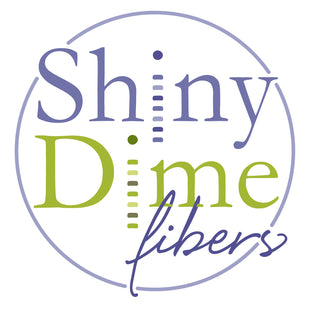
Unraveling the Mystery: 5/2 vs 8/2 yarn
In my shop, I identify the different gauges of my yarn using an industry designation. This is a system that weavers use when purchasing yarn, so they know what size yarn they are buying and what sett to use when putting it on the loom. (Sett is how many threads per inch weaving width.)
What they actually translate into is pretty confusing. For our purposes, I’m going to talk about “English Cotton Count” only, since the yarn in my shop follows this industry standard. There are other counts for linen and wools (and blended yarns can get even more confusing). English Cotton Count is sometimes abbreviated as Ne, NeC or Ncc on a cone of yarn (although on my Tencel™ cones I think it’s literally just CC for cotton count).
The first number indicates the “count.” This is an old cottage industry standard for identifying how many 840 yard lengths you get in a pound of yarn.
- A single strand of yarn with a count of 5 would have 840 x 5 = 4200 yards per pound.
- A single strand of yarn with a count of 8 would have 840 x 8 = 6720 yards per pound.
The second number is the amount of plied strands. So 5/2 and 8/2 have two plied threads, or two threads spun together. You would DIVIDE your count number with the number of plied strands to figure out your total yards per pound.
In the case of 5/2 Tencel™:
- 5 ÷ 2 = 2.5, your cotton count number
- 840 x 2.5 = 2100 yards per pound (ypp)
In the case of 8/2 Tencel™ (and also 8/2 Ringspun Cotton):
- 8 ÷ 2 = 4, your cotton count number
- 840 x 4 = 3360 yards per pound (ypp)
So as you can see, these numbers can give you some indication of what a yarn will be like in thickness, density and strength. The more plies a yarn has, the more twist it contains, which makes it stronger and more dense.
Here's another example: let's compare 8/4 cotton yarn and 5/2 cotton yarn. An 8/4 cotton contains finer threads, but is denser and contains less yardage per pound than 5/2 cotton because of the amount of plies. The threads of the 8 count yarn are thinner than 5 count yarn, but 4 plies makes a denser, stronger yarn than 2 plies. 8/4 cotton yarn is often used as a “carpet warp” yarn, as it works great for rugs and weavings that require a strong dense yarn. 5/2 cotton is a heavy cotton yarn (at least by weaving standards), often used for garments, blankets and home goods.
- 8/4 cotton yarn: (8 ÷ 4) x 840 = 1680 yards
- 5/2 cotton yarn: (5 ÷ 2) x 840 = 2100 yards
So to summarize:
A higher count yarn will have thinner threads than a lower count yarn.
The more plies a yarn has, the stronger and more dense it is.
Most yarn suppliers will give the information you need with the yarn so you don’t have to do all these calculations. SDF provides the recommended weaving sett and yardage on the product page, as well as with the yarn tag.










